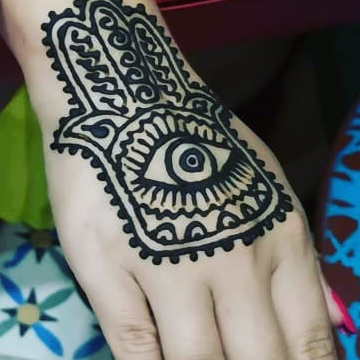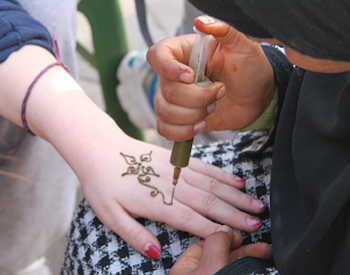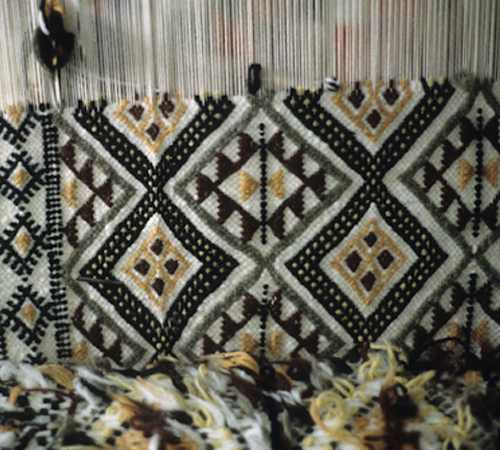Henna in North Africa and the Middle East
The earliest known use of henna dye was found in the hair of an Egyptian mummy from 3400 BCE (5,400 years ago!). She had dyed what we would now call “extensions” in her hair. One ancient design still popular today is the hamsa, a hand with an eye in the center. It is said to ward off the “evil eye” (a curse created by staring). This example is from the Marrakech Henna Art Cafe in Morocco. In North Africa it is called the hand of Miriam by Jews; the hand of Mary by Christians, and the hand of Fatima (Muhammad's first daughter) in Islam. Perhaps because henna is shared across many faiths, it often appears in peace celebrations.

Just because henna has ancient roots does not mean it is old-fashioned. Here you can see a henna artist in Morocco using a modern hypodermic to squirt henna paste into a design. In Morocco henna designs often use things associated with growth: growing vines, blossoming flowers, budding fruit, and so on. That is because henna ceremonies are often for getting married or having a baby.

North African groups such as the Tuareg and Amazigh (Berbers) have nomadic traditions in which women wove fabric for tents. Cynthia Becker, a professor of art history who interviewed women in these cultures, said that by making textiles and tattoos resemble each other, they are connecting their reproductive power as mothers with their artistic power as those who create and maintain tradition.

